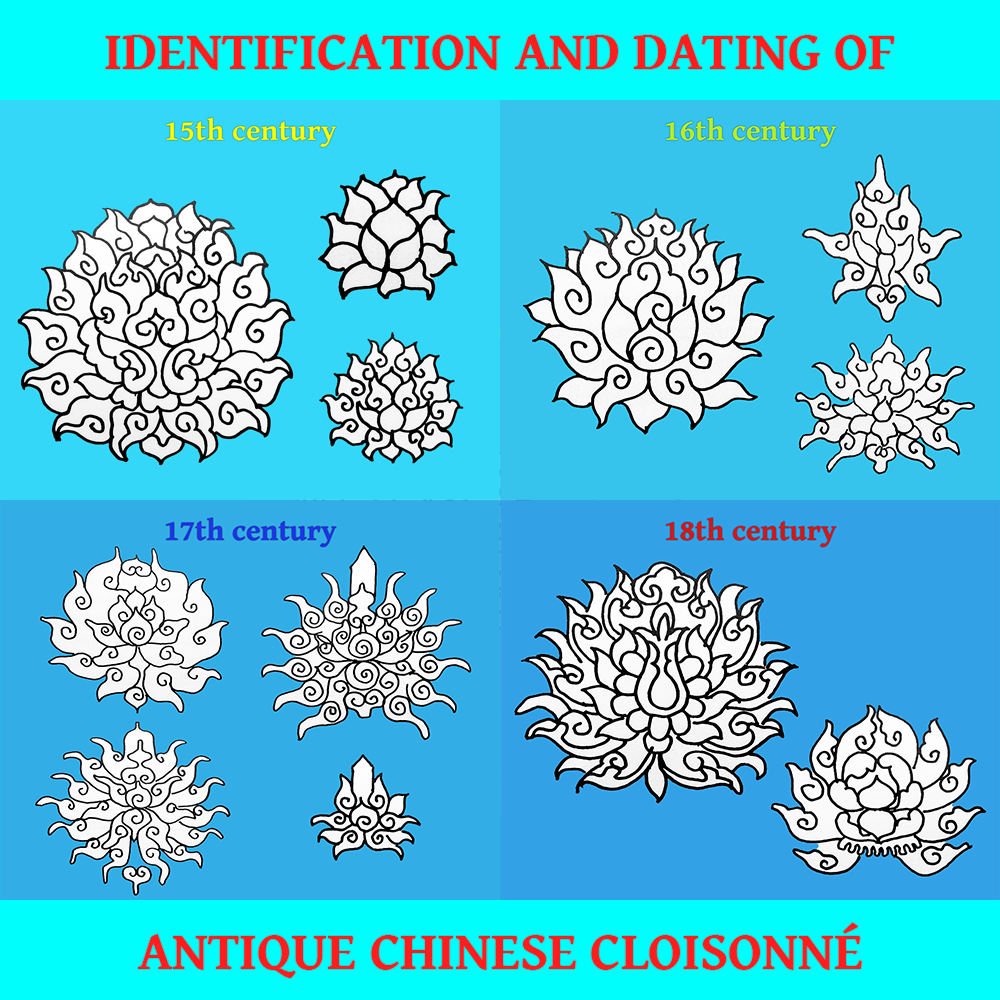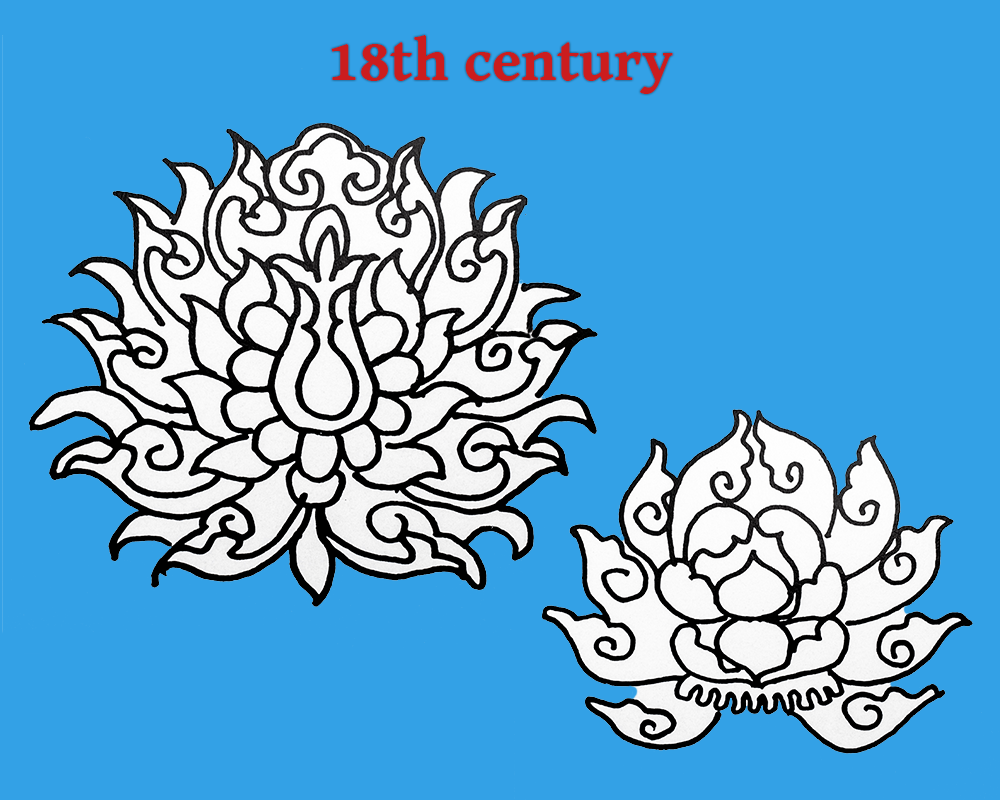
Dating antique Chinese cloisonné can often be a challenging task, as it is not always easy to determine the age of a piece based on its appearance alone. However, there are a few key characteristics that can help narrow down the age of a cloisonné piece. One of the most important factors in dating antique Chinese cloisonné is the style. Cloisonné from the Ming Dynasty (1368-1644) tends to have a more formal, classical style, while cloisonné from the Qing Dynasty (1644-1912) is often more decorative and ornate.
Enamels of the Ming Dynasty tend to have a softer, more muted colour palette, while the development of famille rose enamels in the Qing Dynasty enabled a much wider range of colours with a more vibrant appearance.
Examples below give a simple overview of typical lotus or ‘Bao Xiang Hua’ floral decoration found on cloisonné of the Ming and Qing dynasties between 15th and 18th century. This motif was inspired by earlier 14th century blue and white porcelain and remains popular to this day. Please note that images below show only general trends over the centuries. There was variability between different workshops and these motifs were also often copied on later 19th and 20th century cloisonné. Always consider other factors mentioned on this page to make sure that all aspects of your object are consistent with proposed period of manufacture.




Other factors that can help in dating antique Chinese cloisonné include the design and subject matter of the piece, as well as any marks or inscriptions that may be present. It also helps to compare designs with lacquerware and porcelain of the period as they often share very similar decorative motifs. It is important to note that it is often difficult to accurately date antique Chinese cloisonné based on these factors alone, as there is often overlap between different styles and periods. In order to accurately date a piece of cloisonné, it is necessary to consult with a specialist or refer to reference materials such as books or online resources.
Further reading: Brinker Helmut Susanna Swoboda and Albert Lutz. 1989. Chinese Cloisonné : The Pierre Uldry Collection. New York: Asia Society Galleries.
Need more help?

